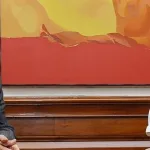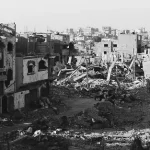Mr. Audrey Azoulay, Director-General, UNESCO on the occasion of World Radio Day 2021 very rightly remarked that more than ever, we need this universal humanist medium and a vector of freedom. Without radio, the right to information and freedom of expression and, with them, fundamental freedoms would be weakened, as would cultural diversity, since community radio stations are the voices of the voiceless. The words of Audrey Azoulay are more than sufficient to highlight the role and relevance of radio as a means of communication in the present era.
The present day Radio was invented by Guglielmo Marconi, an Italian physicist who proved the feasibility of radio communication. He sent and received his first radio signal in Italy in 1895. Since its invention, it has emerged as a powerful and dynamic medium of communication at the grassroots level, a medium of communication admired by all generations from older ones who reminisce listening to their radio transistors as a family to the younger generation that has found the charm of radio on the go either in the car or on their mobile devices. In India, radio has developed a deep connection with rural listeners and it is the cheapest medium for entertainment. Due to its local connect and connect with consumers, advertisers too find this medium a great media investment as the talk group of the radio channels audience is well accounted for. Radio jockeys that stand as influencers too help in building a local connection as they speak the language of the region and help in bringing about a social change in that area the channel is present in.
At the global level also, radio remains the most widely consumed medium. Its unique ability to reach out the widest audience means radio can shape a society’s experience of diversity, stand as an arena for all voices to speak out, be represented and heard (UNESCO). Radio stations serve diverse communities, offering a wide variety of programs, viewpoints and content and reflect the diversity of audiences in their organizations and operations. Broadcast radio today reaches a staggering 99% of the Indian population, while FM radio reaches 65%. Rural India relies on it overwhelmingly for information. It also remains the most inexpensive and portable medium: A radio set can be purchased at Rs 50, which makes it cheaper than a mobile phone or a television. Recent government studies suggest that radio in India could potentially reach up to 98.5% of the population. There are approximately 104 million homes that have radio-nearly double the number of homes that have TV (India Fellow, 2018). Over the last decade, All India Radio (AIR) has focused more on the rural population and the urban lower middle classes, unlike Television’s preoccupation with the urban upper middle classes. According to the EY-FICCI report ‘A billion screens of opportunity’, 47 new radio stations were operationalized in 2018 across 35 cities.
During the last 4 years, the country has moved from having only public service broadcasting to a new four tier broadcasting system which allows for public, private, education and community broadcasting. Private participation wasn’t allowed until 1993 when the government experimented with a daily, two-hour private show slot on the FM channels in Delhi and Mumbai. In 2001 the first phase of private sector participation (FM Phase I) India’s radio sector began and the government conducted open auctions of radio licenses. Radio City Bangalore, which started on July 3, 2001, is India’s first private FM radio station. In 2000, the Government allowed IGNOU to set up FM radio stations in 40 cities to carry out education broadcast. Presently, there are 10 radio stations of IGNOU which have been operationalized.
Community Radio
In December 2002, GoI approved policy for the grant of licenses for setting up of community radio stations to well-established educational institutions including IITs/IIMs. On 1 February 2004, Anna FM was launched as India’s first campus community radio station by the students of the Anna University (Anna University). In 2006, the government of India amended the community radio policy which allowed the agricultural universities, educational institutions and civil society institutions such as NGOs to apply for a community radio broadcasting license under the FM band 88–108 Mega Hertz. First NGO operated community Radio in India was Sangham Radio licensed to Deccan Development Society which started broadcasting on 2008 in Pastapur village, Medak district, Andhra Pradesh. Currently India has 340 Community Radio Stations serving Farmers, Tribal, Coastal communities, ethnic minorities and special interests.
Today’s Community Radio has evolved from the pioneering experiences that began some 50 years ago. Poverty and Social injustice were the stimulus in Latin America; in Europe it became a vital phenomenon as an alternate/critique to mainstream broadcast media. In Africa, the establishment of community radio became a social movement after the end of apartheid regime. Nepal adopted Community Radio in 1997. Radio Sagarmatha 102.4 MHz became the first independent community radio station not only in Nepal but also in South Asia. Since its inception, it has always been on the frontlines of the fight for freedom of expression and Right to Information of Nepalese citizens.
Community Radio is a type of radio service that caters to the interests of a certain area, broadcasting content that is popular to a local audience, but which may often be overlooked by commercial or mass media broadcasters (UNESCO 2002). It has a short range and caters to the information needs of communities living in the surrounding areas owned, run and maintained by a community. Different countries have different nomenclature for the community radio. It is known by popular or educational radio in Latin America, rural or local radio in Africa, Public radio in Australia and free or associate radio in Europe. All these describe the same phenomenon of giving voices and democratizing communication in a community. Dr. Sreedhar is hailed as the father of community radio in India. He set up the first community radio station in Anna University, Tamil Nadu. The concept behind establishment of Community Radio is that local people should produce and broadcast their own programs and participate in operating the station. It is community space for people to meet and collaborate. It is extraordinarily fun and often life-changing. It facilitates individuals, groups, and communities to tell their own diverse stories, to share experiences, and in a media rich world to become active creators and contributors of media.
Community Radio Station is a smaller radio station, can be set up at a cost starting from 10-20 lakh, low power transmitter is used, is confined to a small geographical area with a range of up to 15-20 kilometers, works on frequency modulation and has a maximum tower length of 30 meters. It is independent: of government and commercial forces, not-for-profit in nature, owned and/or managed by the community who participate in policy, programming and operations, members have full access and it is an indicator of full democratization of communication system. Peoples should have access not only to media products but also to media facilities, Feedback channel is always open and there is free interaction between producers and receivers of message.
Why Community Radio?
The different audio visual sources of information like Television, Radio, Newspaper and Magazines have some limitations. They have a commercial approach, are costly, require electricity, have a highly centralized structure and have a broad focus that often does not takes care of the local or region specific aspirations. Moreover newspapers and magazines are of no use for the illiterate farming community. This is not the case of community radio which is cheap, affordable and portable, highly decentralized and takes care of the local needs. Table 1 makes the things more clear.
Community Radio Initiatives in India
Some of the successful community radio initiatives in the country include Anna [email protected] MHz, Gyanvani Community Radio, Holy Cross Community Radio, Sivanthi Community Radio, Radio Active, DU Community Radio, Jamia Community Radio, Sangham Community Radio, Our Voice Community Radio, Vaanoli Community Radio, Jago Mumbai Community Radio.
Community Radio and Agriculture
As it is also a portable medium which a farmer can carry with him/her to the place where they work and listen to the station while doing their work, it plays a great role in agriculture and allied sectors. Community radio with its flexibility, immediacy, immense potentiality and capacity has the potential to cater to the diverse needs of farming community. Realizing the potential of Community Radio, the University of Agricultural Sciences (UAS), Dharwad launched the Krishi Community Radio Station (KCRS), FM 90.4 MHz on May 17, 2007 exclusively for farmers. With this, it became the first agricultural university in India to launch this concept. Right now, it is broadcasting programmes covering the latest agricultural technology to educate the farmers on cropping pattern, improved agricultural practices, technology on animal husbandry, poultry farming, horticulture, fisheries, environment, income generating activities, health, hygiene, nutrition etc involving experienced and successful farmers and experts. Besides, other community radios actively working for the cause of agriculture are ‘Vasundhra Krishi Vahini’ by Vidya Pratishthan Institute of Information Technology (VIIT), Baramati, Maharashtra; Birsa Haryali community radio by Birsa Agricultural University, Ranchi; Radio Adanto, community radio station of Allahabad Agricultural Institute AAI Deemed University, Uttar Pradesh, Pantnagar Janvani launched on August 15,2011 by Govind Vallabh Pant University of Agriculture & Technology in Uttarakhand reaches more than 80 villages in the radius; CCS Radio by CCSHAU Hisar and TNAU E-Community Radio by TNAU Madras are some of the successful community radios running successfully and benefitting farming community all across the country.
(Author is a faculty at SKUAST-Kashmir. He can be reached at [email protected])




